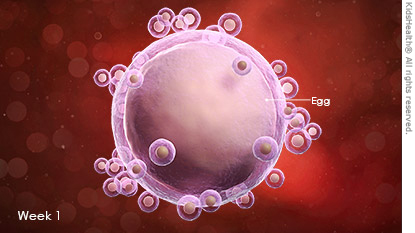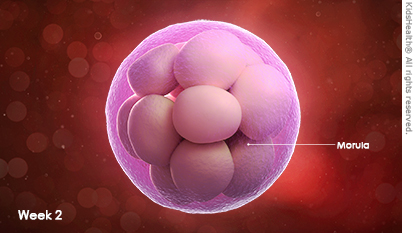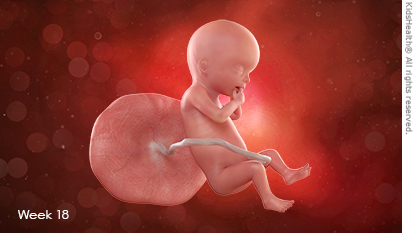Find a Provider
From well-child visits to specialized treatment of complex illnesses and injuries, we offer comprehensive care from an exceptional team of doctors, nurses and allied professionals.
- Parents Home
- Para Padres
- A to Z Dictionary
- Allergy Center
- Asthma
- Cancer
- Diabetes
- Diseases & Conditions
- Doctors & Hospitals
- Emotions & Behavior
- First Aid & Safety
- Flu (Influenza)
- Food Allergies
- General Health
- Growth & Development
- Heart Health & Conditions
- Homework Help Center
- Infections
- Newborn Care
- Nutrition & Fitness
- Play & Learn
- Pregnancy Center
- Preventing Premature Birth
- Q&A
- School & Family Life
- Sports Medicine
- Teens Home
- Para Adolescentes
- Asthma
- Be Your Best Self
- Body & Skin Care
- Cancer
- Diabetes
- Diseases & Conditions
- Drugs & Alcohol
- Flu (Influenza)
- Homework Help
- Infections
- Managing Your Weight
- Medical Care 101
- Mental Health
- Nutrition & Fitness
- Q&A
- Safety & First Aid
- School, Jobs, & Friends
- Sexual Health
- Sports Medicine
- Stress & Coping
Pregnancy Slideshow (Baby)
How Does My Baby Grow During Pregnancy?
This week‑by‑week pregnancy slideshow shows you some of the important developments taking place as your baby grows.

Pregnancy Calendar: Your Baby
Take a peek inside the womb to see how baby grows from a tiny ball of cells into a masterpiece!

Week 1
Week 1 is actually your menstrual period, but because your due date is calculated from the first day of your last period, it counts as part of your 40‑week pregnancy.

Week 1
After your period, your body begins to prepare the uterus for pregnancy.

Week 2
You're most likely to get pregnant at week's end. It's the midpoint of a typical menstrual cycle, when the egg leaves the ovary. The first sperm to get inside the egg will fertilize it.

Week 2
The fertilized egg divides into many cells as it travels down the fallopian tube and into the uterus. When it reaches the uterus, it will be a tiny ball of cells (a morula).

Week 3
The morula becomes a blastocyst. The cells inside clump together and become the embryo. The outer layer of cells will be the placenta. This week, the blastocyst attaches to the lining of the uterus.

Week 4
The embryo's cells will develop into organs and body parts. Also developing this week are the fluid‑filled amnion, which protects baby, and the yolk sac, which provides nourishment early on.

Week 5
The embryo begins to take on its distinct shape. Developing parts this week include the neural tube (which will become the spinal cord and brain) and heart and blood vessels.

Week 6
Your baby's heart is beating! Small buds that will become the arms and legs are appearing. Also forming this week are the digestive and respiratory systems.

Week 7
Your baby's facial features are taking shape this week. The mouth, nose, ears, and eyes will become more defined. Baby's tiny arm bud now has a hand on the end of it, which looks like a paddle.

Week 8
Toe buds and finger buds take shape this week.

Week 9
Your baby measures about an inch long. He or she may make some first movements as muscles develop, but you won't feel them for several more weeks.

Week 10
All of baby's vital organs have been formed and are starting to work together. Birth defects are unlikely to develop after this week.

Week 11
This week, baby looks like a miniature genius! The giant head takes up about half of the body length.

Week 12
Tiny fingernails and toenails start to form this week, which is the end of the first trimester.

Week 13
This week marks the beginning of the second trimester. Even though you might not feel it yet, baby is moving and kicking often. In fact, your baby may be able to put a thumb in the mouth.

Week 14
Wondering if your baby is a boy or girl? This week genitals are fully formed, so at your next ultrasound appointment the doctor might be able to tell your baby's sex.

Week 15
This week, your baby's eyebrows are growing and hair starts to appear on your baby's head.

Week 16
Some fine hairs, called lanugo, have developed on your baby's face. This soft, colorless hair protects the skin and will eventually cover most of your baby's body until it is shed before delivery.

Week 17
Your baby is still very tiny, about 5 inches in length and weighing about 5 ounces. Your baby is able to swallow amniotic fluid, and may get hiccups as a result!

Week 18
This week, your baby's bones begin to harden, or ossify. Some mothers can begin to feel their baby's movements at around this time.

Week 19
A waxy, cheese‑like substance called vernix is covering your baby to help protect delicate skin from being chapped or scratched.

Week 20
You're now halfway through your pregnancy. If you haven't already, you might begin to feel baby's first kicks.

Week 21
Baby's ears have moved into their final position on the side of the head. Your baby is probably starting to hear sounds!

Week 22
Taste buds are forming and your baby's sense of touch is developing. Your baby may be able to taste the amniotic fluid or touch the toes!

Week 23
You may feel more forceful movements this week. Baby's daily workout routine now includes moving the muscles in the fingers, toes, arms, and legs.

Week 24
This week, your baby will be practicing breathing movements as the lungs develop. He or she still relies on the placenta for oxygen.

Week 25
Your baby's hearing continues to develop. Baby might be able to hear your voice, music, and the voices of others close by.

Week 26
This is the last week of the second trimester. Your little one will gain much of that kissable "baby fat" over the third trimester.

Week 27
This is the first week of the third trimester. Baby's lungs, liver, and immune system still need to fully mature, but if born now, your baby would have a very good chance of survival.

Week 28
The eyes that have been sealed for so long are just beginning to open, and baby will get his or her first glimpses of the womb.

Week 29
Your baby is starting to gain weight at a quicker pace. What used to be flutters of movement now may be hard jabs and kicks that take your breath away.

Week 30
Your baby continues to make breathing movements, getting ready to take his or her first breaths at birth. If you feel regular twitches in your uterus from time to time, it could be hiccups!

Week 31
Your baby pees several cups of urine a day into the amniotic fluid. This fluid helps keep your womb cushiony so that your baby is protected.

Week 32
Your baby weighs about 4 pounds and is about 11 inches long. Lanugo, the fine hair that has protected your baby's sensitive skin, is starting to fall off in preparation for birth.

Week 33
Your baby sleeps most of the day and night, and even has REM (rapid eye movement) sleep, during which dreams happen.

Week 34
The bones that make up your baby's skull can move while inside the pelvis. This is called "molding" and helps the baby pass through the birth canal.

Week 35
Your growing baby is now cramped inside the uterus. Movements may feel stronger and more forceful.

Week 36
Your baby is probably in position for delivery. Your health care provider can tell you if baby is positioned head‑ or bottom‑first.

Week 37
Baby's eyesight is so developed now that if a bright light shines on your belly, your baby may see it and turn toward it.

Week 38
Baby has likely "dropped" into the pelvis in preparation for birth. This means that your bladder is squished, making you have to pee more often.

Week 39
Your baby is considered full‑term this week. At birth, don't be alarmed if your baby isn't picture‑perfect. Newborns may have a temporarily misshapen head from the birth canal, rashes, and more.

Week 40
Babies born around this time weigh about 7 pounds, 4 ounces and measure about 20 inches from head to toe. Boys tend to be bigger than girls. Enjoy your masterpiece!

© 1995- The Nemours Foundation. KidsHealth® is a registered trademark of The Nemours Foundation. All rights reserved.
Images sourced by The Nemours Foundation and Getty Images.


